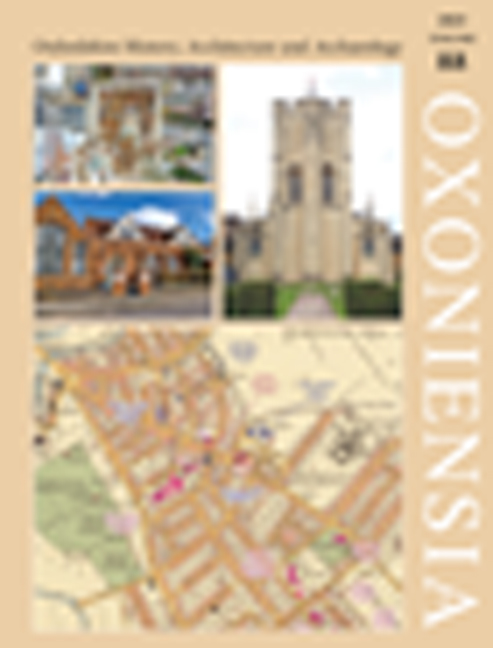Archaeological Work in Oxford, 2022
Published online by Cambridge University Press: 15 May 2024
Summary
This year saw a return to the pattern of major college developments within the historic core of Oxford with institutions seeking to expand within heavily confined sites. At both Frewin Hall (Brasenose College) and Castle Hill House (St Peter’s College) physically constrained evaluations undertaken before planning consent was granted were unable to fully characterise the complexity of the archaeology present. The result in both cases being the identification and recovery of unexpected and exciting archaeology during the excavation phase of these projects. The Brasenose College site was notable for capturing the public imagination with press releases celebrating the investigation of the ‘lost college’ of St Mary’s and a successful open day followed by television slots on the local news and BBC’s Digging for Britain. Subsequently Oxford Archaeology received an Oxford Preservation Trust certificate for their work at the site.
The year also saw careful evaluation work around the former Blackfriars church to ensure that any future development avoids the medieval burial remains in that area. Elsewhere, evaluations revealed significant new information at Littlemore Priory, providing insights into the layout of the Nunnery precinct, and at the large Oxpens site located west of the Ice Rink, providing information on the character of Oxford’s western floodplain and hinterland. Short summaries of selected investigations from 2022 are provided below.
SELECTED PROJECTS
Brasenose College, Frewin Hall, New Inn Hall Street
Between January and March an excavation was undertaken by OA in the garden of Frewin Hall, with follow up work on service trenches continuing into May (Fig. 1). In addition to a large well-built wall foundation, likely the remains of the south range of the quadrangle of the fifteenth- to sixteenth-century Augustinian St Mary’s College, the excavation revealed several medieval stone structures including two kitchen areas, stone-lined waste pits, boundary walls, foundations with distinctive relieving arches, and a large stone-built cellared building. A remarkable discovery at the northern end of the site was the remains of an upstanding Bronze Age barrow mound and associated ditch. This had been cut into by pits and subsumed by later build-up. A mid to late Anglo-Saxon semi-cellared building was cut into the barrow, with probable evidence of destruction from fire and another pit containing likely redeposited human bone that has produced an intriguing eighth- to ninth-century AD radiocarbon date (Fig. 2).
- Type
- Chapter
- Information
- Oxoniensia , pp. 343 - 346Publisher: Boydell & BrewerFirst published in: 2024

